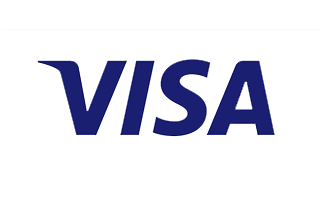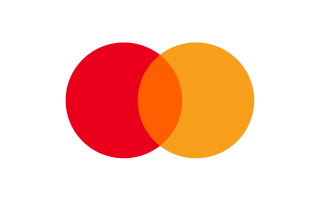From an abroad trip to everyday life, vlogging is a popular way to share your experience with the world. Whether you are looking to start your own YouTube channel or pursue your passion for creating videos on Instagram and Tiktok, you need a good vlogging camera to start off.
For beginners who are new to video production, choosing the right camera can be challenging as there are so many options and intimidating tech terms (e.g., DSLR? Mirrorless? 4K? ISO?).
And depending on what kind of content you plan to create, the definition of a good vlogging camera can be different. For example, for an adventure vlogger, a lightweight camera with excellent image stabilization is best. But if you are making makeup tutorials at home, image quality and lightning are the priorities for you.
This post will walk you through how to select an amateur-level vlogging camera that is right for you. Creative ideas plus a good camera make your first viral video!
Best Vlogging Camera for Beginners
AKASO Brave 7 LE(Budget Action Camera) - Price: $139.99

The Brave 7 LE action camera is weatherproof and can survive all shooting situations in vlogging. The IPX7 waterproof architecture will shield the action camera from fog, snow, and water splashing. With a front-facing screen, you can use the vibrant front screen to satisfy your selfie needs, and the 2-inch rear touch screen makes it simpler to use than ever before, even for beginners. This action camera can take high-quality 4 K 30Fps video and 20MP pictures, enabling you to make vlogging videos.
If you are a beginner who just wants to give vlogging a shot and are not ready to commit, AKASO is a good choice for you.
Pros:
- Front-facing screen to see yourself in the frame;
- Install AKASO app on your smartphone for controlling the camera, video editing, and uploading;
- Image stabilization.
Cons:
- Small sensor.
AKASO Keychain (Cheap Vlogging Camera for Beginners) - Price: $99

Sincerely, for a very cheap camera, AKASO Keychain can't be the main camera for your vlogging, but it can be a great addition to your vlogging equipment. It's highly compact, weather-safe, and even packs in 4k video.
This tiny camera can be easily mounted on your head, shoulder, car, or everywhere you want to move with you and shoot from special angles that can't be done by a regular camera.
It also provides image stabilization and Wi-Fi feature.
Pros:
- Flexible. Able to be placed or clipped on various places to shoot from creative angles;
- Extremely lightweight. Good for travel vlogging;
- Beginner-friendly.
Cons:
- Too small to be used as the main vlogging camera.
Sony ZV-1(Portable Vlog Camera) - Price: $798.00

This offshoot of Sony's famous RX100 line has been designed explicitly with bloggers and Youtubers in mind. It features an improved three-capsule microphone and contains a windsock to enable you to capture better audio quality outdoors.
Internally, the ZV-1 has almost the same 20-megapixel 1-inch sensor as the RX100 VII, which was our choice for the best point-and-shoot camera. Nevertheless, instead of using the 24-200 mm f/2.8-4.5 (full-frame equivalent) lens of the RX100 VII, Sony opted for the shorter 24-70 mm f/1.8-2.8 lens of older RX100 cameras.
Pros:
- Flip-around screen;
- Features for vlogging starter, such as burry background effect, soft skin effect for beauty vloggers, built-in ND filter;
- Built-in microphone;
- Face tracking AF.
Cons:
- Small rear screen.
Canon Powershot G7 X Mark III (Compact Camera for Vlog)

This lightweight, all-in-one camera has a lot to do with it. It seems like it's made for a casual camera user, so you can't change the brightness and the ISO. With the two dials on the camera, you can change them a little, but it's tough to get complete control of the settings you like.
Nevertheless, this camera does very well in auto mode, particularly when you have adequate light. This is also one of the most reliable cameras for walking and chatting. This camera has some good specifications. It has a 20.2-megapixel 1-inch BSI-CMOS sensor and an ISO scale from 125 to 12800. The extended ISO range can help take very low-light images. Even so, video capture is limited to 1080p, which is a little weak for the present day and era.
Sony Alpha A7 III (Mirrorless Camera)

Sony's Mirrorless cameras always seem to be powerful hybrid devices, and the newest A7 III blends spectacular image quality with a fantastic 4K video from its balanced 24-megapixel full-frame sensor. The Sony A7 III is by far the most expensive choice on this list, and it's not for everybody, although if you're looking to take the next step in your photos and video creation, it's definitely worth the try.
Canon EOS M50 (Mirrorless for Beginners)

Canon enthusiasts were quite pleased to see the EOS M50, their maiden foray into the 4k-enabled Mirrorless market. The EOS M50 blends into the Canon line at the high end of the mid-market, providing functionality that you won't be found in the lower-priced models.
In other words, the EOS M50 is a camera for beginners, because it has several features, but not that many to confuse you.
Although the video image is excellent, we should inform you that there is a 1.6x crop when you film in 4k. This means that the camera zooms 1.6 times to 4k of stabilized video. This is all right if you're aiming for tight shots; however, if you want a substantial angle on the 15-45 mm lens package, you might be struggling to capture everything.
Canon EOS 90D (DSLR for Beginners)

The 90D is Canon's response to those who are still not quite willing to get on the micro four-thirds ride, and want to have a solid DSLR that could still be used for Vlogging.
The Canon 90D has a higher 32.5MP megapixel count than most of its APS-C sensor counterparts, which gives a lot more versatility when it comes to editing images and recording.
This also means a beautiful, uncropped 4K shot! This means that even with a primary stock canon lens, you can get a large enough field of view to get some good Vlogging videos at a handheld distance.
What Types of Camera Are Best for Vlogging?
1. Action Camera
Action cameras are small-size cam that is easily mounted on a tripod, desk, or anywhere you like to start vlogging. It is so convenient that it is a must-have in every vlogger’s equipment list.
Portable
The small size and lightweight action camera offer you the flexibility to integrate it into your vlogging activity everywhere.
Durability
Action cameras are usually rugged, waterproof, shockproof, and even dustproof. Thus, they can be used in rugged conditions, even underwater.
Affordability
This is probably one of the best advantages of using action cameras, they are super affordable, and you won't have to break the bank using these cameras.

2. Mirrorless Camera
Mirrorless cameras provide removable lens without an optical viewfinder. Comparing to a DSLR, a mirrorless camera is smaller, lighter, and simpler, which is more suitable for vlogging beginners.
Size and Weight
With a smaller size and lightweight, a mirrorless camera is easy to be carried everywhere for vlogging.
Autofocus Speed
Mirrorless cameras have an improved autofocus system, which enables vloggers to take sharp shots at fast shutter speed.
Previewing Images
When you are vlogging outdoors in good light, the preview of a mirrorless camera on the screen will look similar to the final shot.
Video Quality
High-end mirrorless cameras can record 4K or Ultra HD film and help you deliver high-quality video even you are a beginner.
Battery Life
A mirrorless camera offers superior battery life for hours of vlogging.

3. DSLR
Detachable Lens and Body
DSLR cameras are detachable, which makes them great for vlogging, it’s possible to separate the lens and body, and it does not weight that much.
Vibration Reduction
Vibration reduction in vlogging is such a big deal, and this because, you’re always likely to be on the move when you vlog.
Affordable Lens
The cheap lens is a great deal for most vloggers, especially beginner vloggers. A DSLR camera offers vloggers the ease of replacing their lens whenever they need it.
External Microphones
The microphone is quite essential when vlogging and most DSLR cameras support external microphones.

What Makes A Good Vlogging Camera?

To get a good vlog camera, you should check on the following features:
- Flip up screen: A flip-up or front-facing screen lets you easily see what is in the frame while shooting, which is a very useful feature for vlogging. You can make sure that you or your subjects are in the frame and in focus.
- Face/eye AF mode: If you have to move a lot in the vlogging, you would like a camera with face/eye AF mode. Face or eye AF mode is the face or eye detection mode in which a camera will focus with priority on your faces or eyes.
- Video resolution: as it is known, the higher the number of megapixels, the better the chances of the camera producing clear videos. Ideally, any camera you want to get for vlogging should be nothing less than 1080p for the best shots. And 4K videos are becoming the new trend. So go for a 4K camera in case 1080p is not good enough in the future.
- External mic support: as a vlogger, you need a vlogging camera with a mic because you also need to be able to record audio. But not all cameras have good microphone qualities. It is good to get a vlog camera with a microphone input to be able to attach an external microphone for better sound quality.
- Still quality: Sometimes you need to take photos to enrich your content. While the video quality is the priority in a vlogging camera, still images can't be neglected.
- Sensor size: Bigger sensor can capture more light and deliver better footage quality. DSLRs and mirrorless cameras tend to the larger sensors, while camcorders and action cams have smaller ones.
- Lightweight & small(for outdoor vlogging): If you are doing travel vlogs or the walk-and-talk type of vlogging, the size and weight of the camera should be taken into account. A pocket compact camera and tiny action camera provide the best portability.
- Image stabilization(for outdoor vlogging): Image stabilization is a must-have if your videos have to be taken on the go. Get a vlogging camera with either optical image stabilization or electronic image stabilization.
- A wide aperture(for lifestyle vlogging): Wide aperture can capture more light. And cameras with a wide aperture can easily achieve the blurry background effect to give your videos nice aesthetics.
- Wi-Fi: A camera with Wi-Fi support enables you quickly transfer the vlogs to a smartphone or computer for editing and upload them to YouTube.

Vlogging Tips for Beginners
● Keep your videos exciting and engaging
● Enter into partnership with other vloggers
● Ensure you ask for a recommendation from your viewers
● Edit your videos
● Integrate life into your videos
● Be consistent
● Set goals for yourself
● Engage in trends
● Interact with your viewers


















